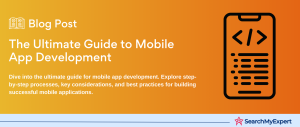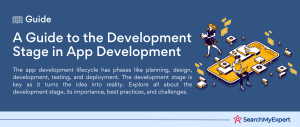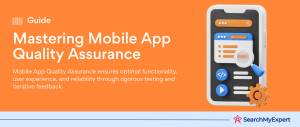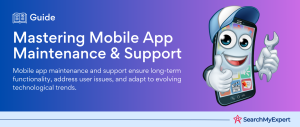The world of mobile applications is incredibly vast, with millions of applications available across various platforms. Capturing the attention of potential users and converting them into active ones is a challenge many developers and marketers face. User acquisition (UA) has become the cornerstone of mobile app success. Here, we delve deep into understanding UA and proven strategies to excel in it.
Understanding User Acquisition
User acquisition refers to the methodologies and tactics employed by businesses to attract new users to their product or service. In the realm of mobile apps, it primarily focuses on enhancing the app’s visibility and driving more downloads.
The primary channels for user acquisition include:
- Paid Media Marketing: Where companies pay a third party to advertise their product.
- Owned Media Marketing: Utilizing the company’s own resources to acquire users without spending extra.
- App Store Optimization (ASO): Optimizing app store listings for better discoverability.
- Retargeting & Re-Engagement Campaigns: Re-engaging past users through personalized notifications or emails.
The Significance of User Acquisition
Any application’s ultimate goal is to achieve consistent growth and customer satisfaction. An app’s success, in terms of revenue, is directly proportional to its user base. Loyal users amplify a brand’s presence, recommending it to peers, and often providing invaluable feedback. An expanding user base thus translates to long-term success and brand loyalty.
Challenges in User Acquisition
In the fast-paced tech world, user acquisition isn’t without its hurdles:
- Mobile Ad Fraud: Fraudulent traffic can make it seem like your app is getting downloads, but these aren’t genuine users.
- Unclear Advertising Costs: Many ad networks offer limited data about ad campaigns, making optimization challenging.
- Global Markets: Adapting to varied cultures and user behaviors across countries can be complex.
- Organic Traffic Pursuit: The most valued users are those who discover your app without any advertisements. The challenge lies in maximizing this organic reach.
Strategies to Enhance User Acquisition
1. App Store Optimization Mastery
ASO is indispensable for mobile user acquisition. Key strategies include:
- Researching keywords from competitor app reviews.
- Uploading engaging videos to enhance app store rankings.
- Seasonally updating app descriptions.
- Regularly updating the app to engage existing users and attract new ones.
- Selecting the appropriate app category and monitoring ASO metrics.
2. Encourage Reviews from Dedicated Users
User reviews significantly impact your app’s visibility and trustworthiness. Tactics include:
- Introducing non-intrusive review prompts.
- Requesting feedback contextually, for example, after a user completes a task within the app.
- Employing a two-step review approach: initially ask if users enjoy the app and then direct satisfied users to leave a review.
3. Invest in Paid Advertising
Diversify your ad strategies across platforms based on your target audience, whether it’s through Facebook Ads, Cross-Promotion Networks, Promoted Tweets, or App Store Search Ads.
4. Implement Referral Marketing
Recommendations from friends and family carry significant weight. To capitalize on this:
- Provide valuable incentives for referrals.
- Simplify the referral sharing process.
- Recognize and reward active users.
- Integrate referrals within the user’s app journey.
5. Maximize Social Media and Influencer Marketing
Given the pervasive nature of social media, use platforms to showcase app features, address user queries, or obtain feedback. Collaborating with influencers can further amplify your app’s reach.
6. Explore Affiliate Marketing
Affiliate marketing can serve as a potent tool for driving quality users to your app. By partnering with relevant websites or influencers, you can reach a more niche audience that’s likely to be interested in what your app offers. Tactics include:
- Identifying and collaborating with potential affiliates who cater to a similar target audience.
- Offering competitive commission rates to incentivize affiliates.
- Providing affiliates with high-quality promotional materials like banners, videos, and sample content.
7. Email Marketing for Re-engagement
Even in the era of sophisticated digital channels, email remains a powerful tool for user re-engagement. To maximize your app’s reach:
- Segment your email list based on user activity and preferences.
- Design responsive, mobile-friendly email templates.
- Send personalized content, providing value through updates, offers, or exclusive features.
- Use analytics to track open rates, click-through rates, and conversions, optimizing campaigns accordingly.
8. Utilize Content Marketing
Crafting valuable content can not only drive organic traffic but also establish your brand’s authority. Consider these strategies:
- Start a blog that offers valuable insights, news, or tutorials related to your app or its industry.
- Use SEO best practices to make sure your content ranks well in search engines.
- Create engaging multimedia content like infographics, videos, or podcasts.
- Engage with your audience by responding to comments and feedback.
9. Engage in Community Building
Building a community around your app can foster brand loyalty and create a base of dedicated users who can further amplify your reach. Here’s how:
- Launch forums or discussion boards where users can exchange tips, report issues, and share experiences related to your app.
- Organize webinars, workshops, or live Q&A sessions to engage with your users directly.
- Participate actively in relevant third-party forums, Reddit communities, or Quora to assist potential users and subtly promote your app.
10. Collaborative Partnerships & Integrations
Collaborating with complementary apps or services can provide mutual benefits in terms of user acquisition:
- Identify potential partners whose offerings align with your app’s functionality.
- Explore API integrations where both apps can share features or data.
- Co-host events or promotional campaigns to tap into each other’s user base.
11. Geo-Targeting & Localization
Tailoring your app’s experience based on geographical and cultural nuances can significantly boost user acquisition:
- Offer multi-language support catering to the major segments of your user base.
- Adjust app content, promotions, or features based on regional preferences or festivities.
- Employ geo-targeted ads to reach specific user groups in particular locations.
12. User Feedback & Continuous Improvements
Listening to your users can provide invaluable insights into improving the app and boosting user acquisition:
- Implement in-app feedback mechanisms.
- Regularly conduct user surveys to identify potential areas of improvement.
- Prioritize and act upon feedback, ensuring users feel valued and heard.
13. Leverage Gamification Techniques
Introducing game-like elements into your app can significantly boost user engagement and, by extension, acquisition:
- Incorporate reward systems for completing specific tasks or milestones within the app.
- Design challenges or leaderboards to foster a sense of competition among users.
- Introduce badges, achievements, or stickers that users can showcase or share on social platforms.
14. Harness the Power of Video Marketing
Videos can vividly showcase the features and benefits of your app, making them a potent tool for user acquisition:
- Craft compelling video trailers or demos highlighting the app’s main features.
- Share these videos across YouTube, social media platforms, and within App Store listings.
- Consider live video sessions, tutorials, or behind-the-scenes looks to engage potential users further.
15. Optimize Onboarding Experience
A user’s initial interaction with your app can make or break their long-term engagement:
- Simplify sign-up processes, perhaps using social media integrations.
- Offer intuitive tutorials or walkthroughs highlighting the app’s primary functionalities.
- Gather initial feedback during the onboarding phase to understand and rectify potential pain points.
16. Adopt Predictive Analytics
Using data-driven insights can help you foresee trends and user behaviors, enabling proactive optimizations:
- Use tools that analyze user behavior to predict future actions or preferences.
- Segment users based on predicted behaviors and tailor marketing campaigns accordingly.
- Identify potential churn risks and strategize re-engagement campaigns.
This diagram showcases the progression of strategies in user acquisition, emphasizing the balance between innovative tactics and the foundational principle of user-centricity.

Future of User Acquisition: Staying Ahead of the Curve
As technology and user preferences evolve, so will the strategies for user acquisition:
- Stay updated with the latest trends in Augmented Reality (AR), Virtual Reality (VR), and Mixed Reality (MR) as these can offer new avenues for app experiences.
- Monitor emerging social platforms or channels for promotional opportunities.
- Adopt a proactive approach to privacy concerns, ensuring transparent communication with users.
Monitoring and Optimizing User Acquisition Efforts
After deploying various user acquisition strategies, it’s imperative to constantly monitor their performance. Tools like Google Analytics, Firebase, or specialized app analytics platforms can provide invaluable insights. Remember:
- Track key metrics like acquisition costs, user lifetime value, and retention rates.
- Conduct A/B tests to determine the most effective strategies.
- Continuously iterate and refine based on feedback and data.
Sustainability in User Acquisition: Building for the Long Haul
User acquisition isn’t just about gaining new users but retaining them. As the digital landscape grows, sustainability becomes paramount:
- Focus on long-term value and consistent engagement rather than short-term growth spurts.
- Foster transparency in data handling and privacy practices to build user trust.
- Cultivate a brand voice and presence that resonates with users, encouraging community and loyalty.
Conclusion
The journey of user acquisition is multi-faceted, requiring both strategic foresight and reactive adaptability. By adopting a comprehensive, user-first mindset and leveraging diverse strategies, your app can not only attract but also sustain a dedicated user base, ensuring consistent growth and success in a competitive marketplace.
Pioneer Change with the guidance of top App Developers.
Table of Contents
Toggle






